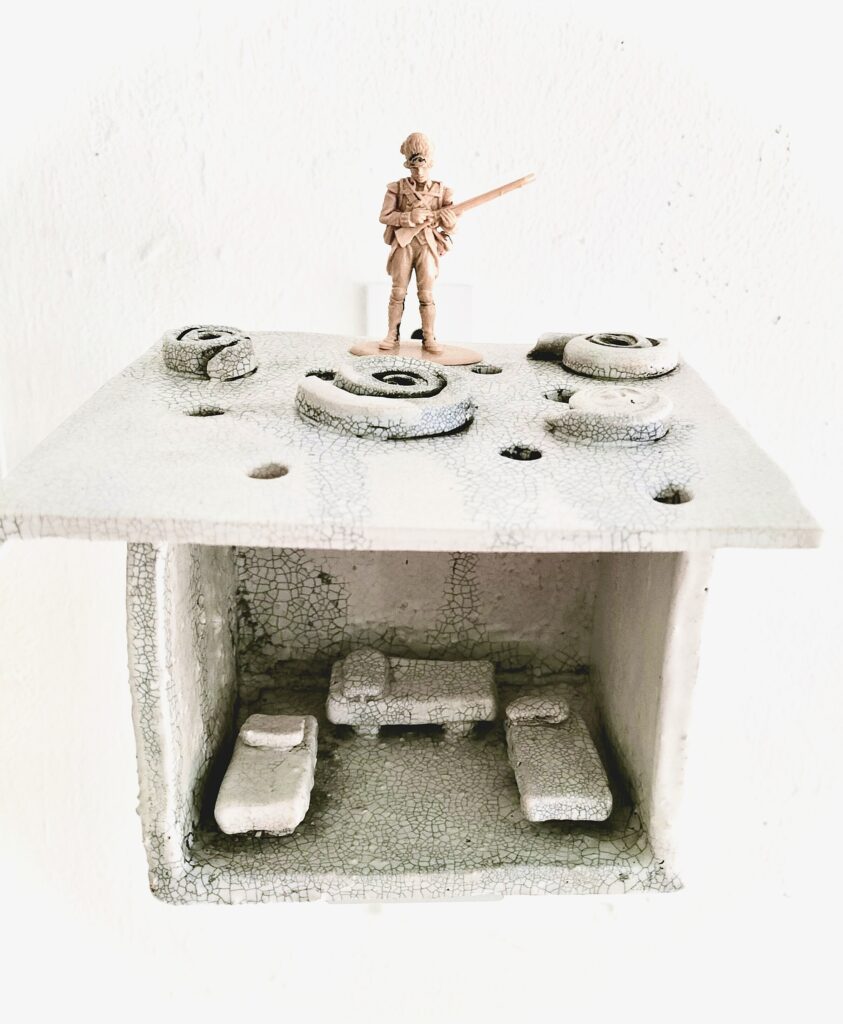2024/ 2025; Project ‘Bare Space’:
Kale Ruimte
The installation ‘Bare Space‘ comprises multiple ceramic units or rooms, which collectively form an integrated spatial composition. These individual elements are brought together beneath a unified roof constructed from bamboo. The interplay between the refined ceramic forms and the organic qualities of the bamboo canopy evokes a dialogue between fragility and resilience, permanence and transience, as well as craftsmanship and nature.
A detailed description of the work is provided below the images.

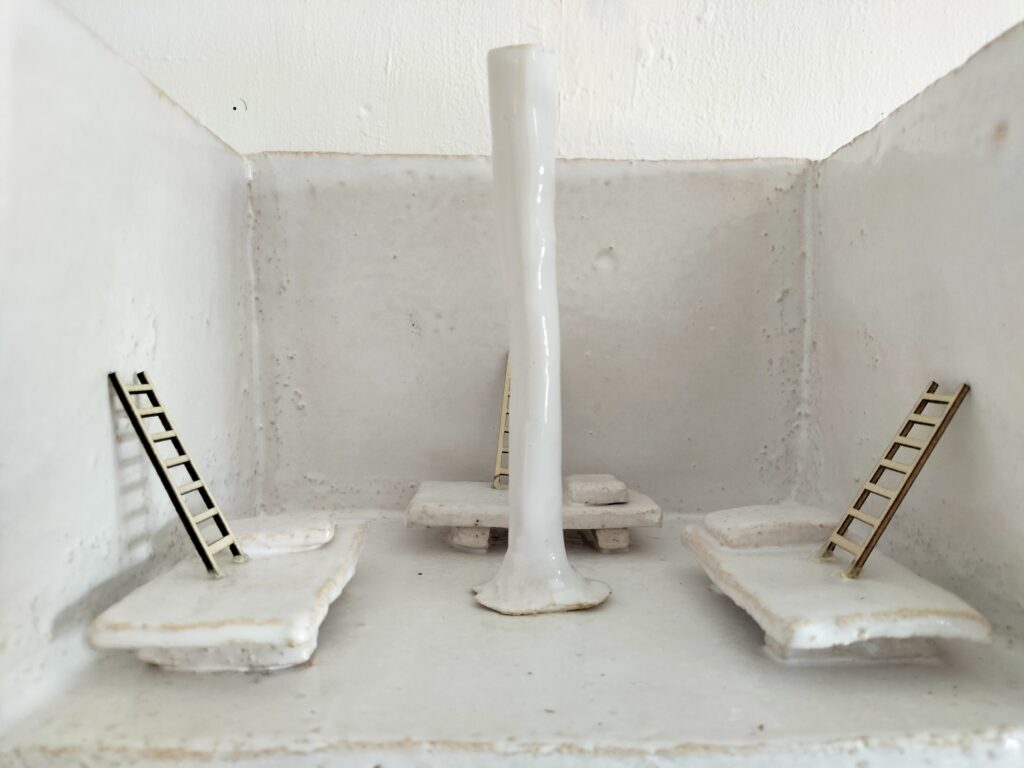
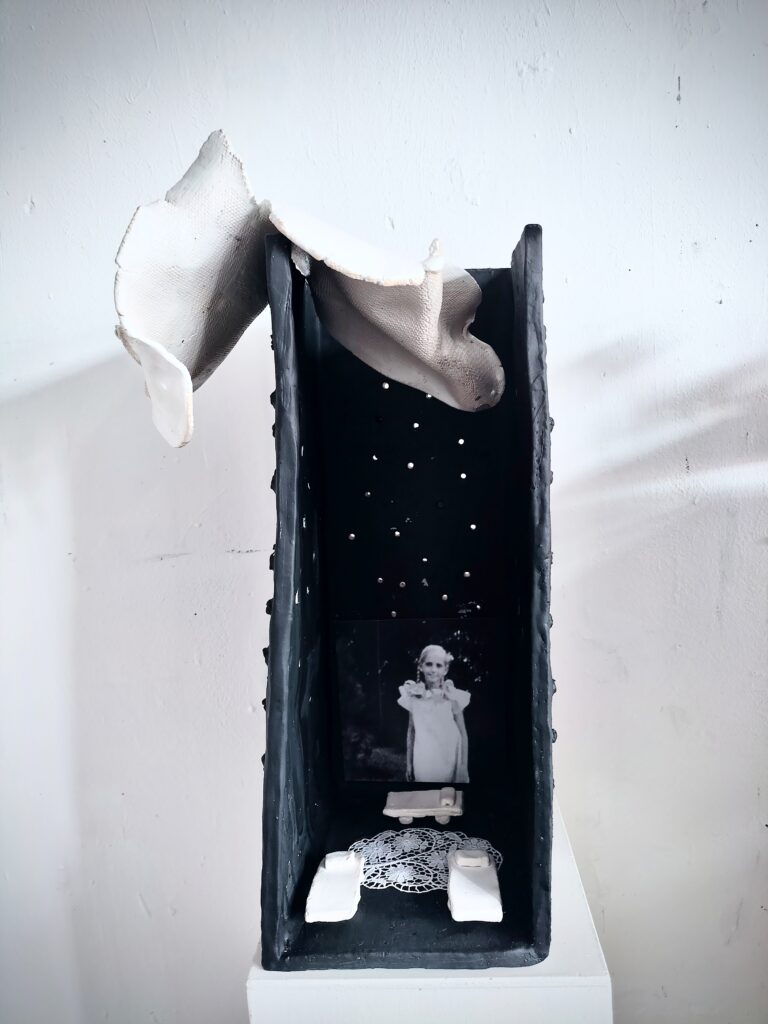

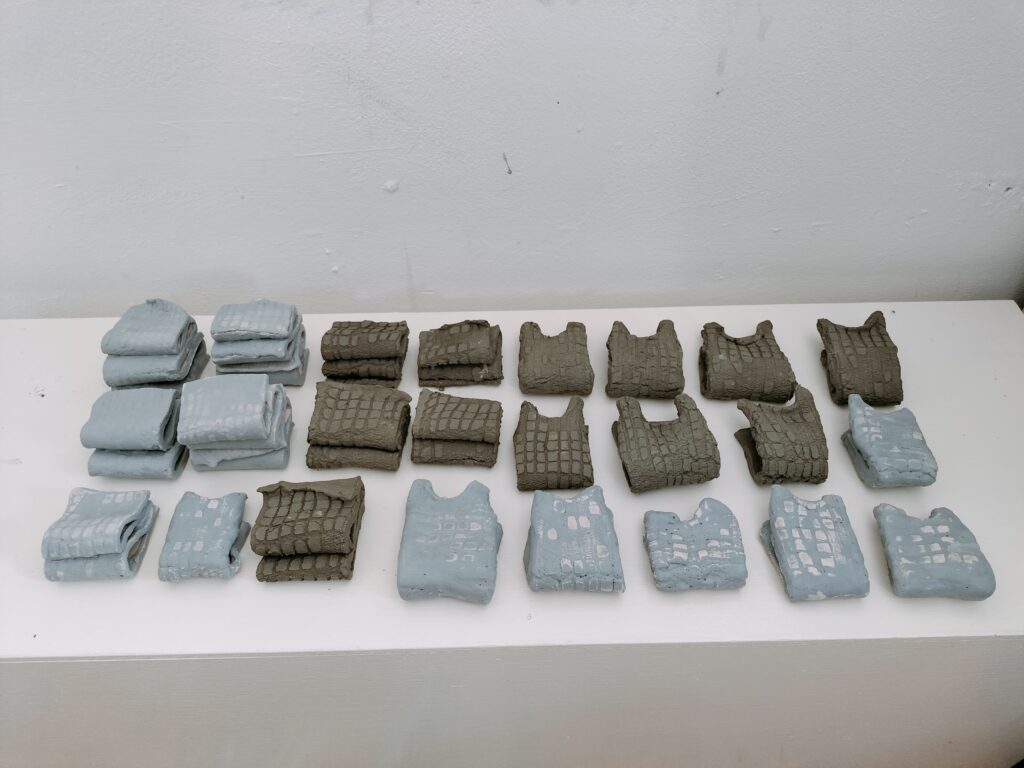

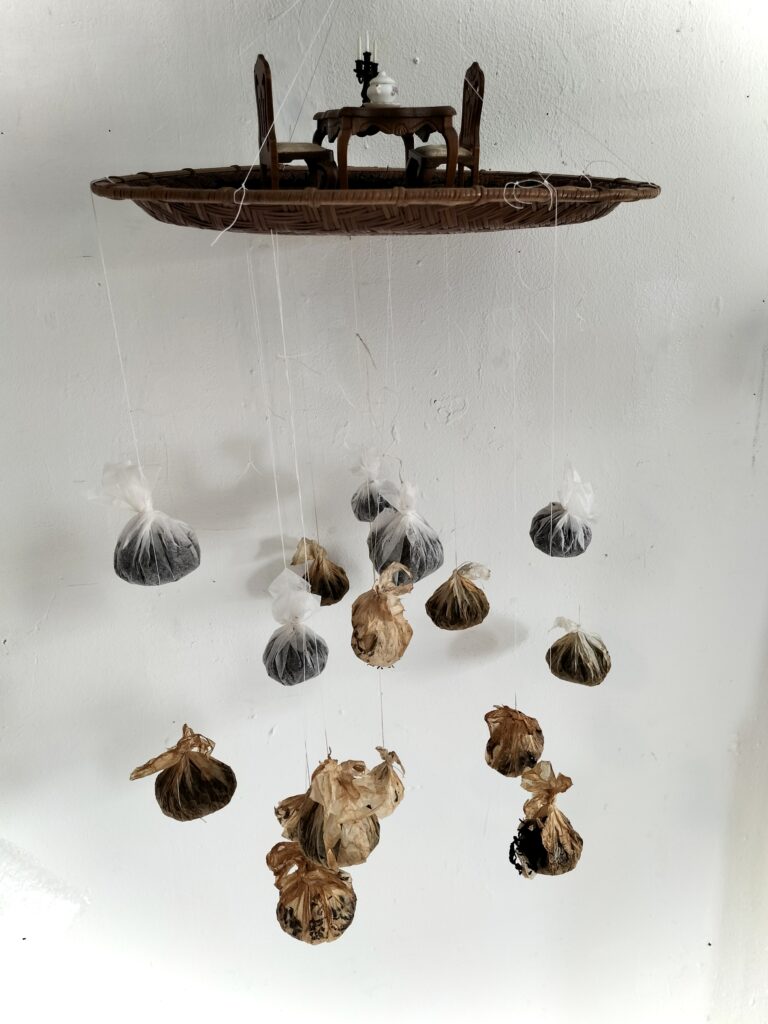
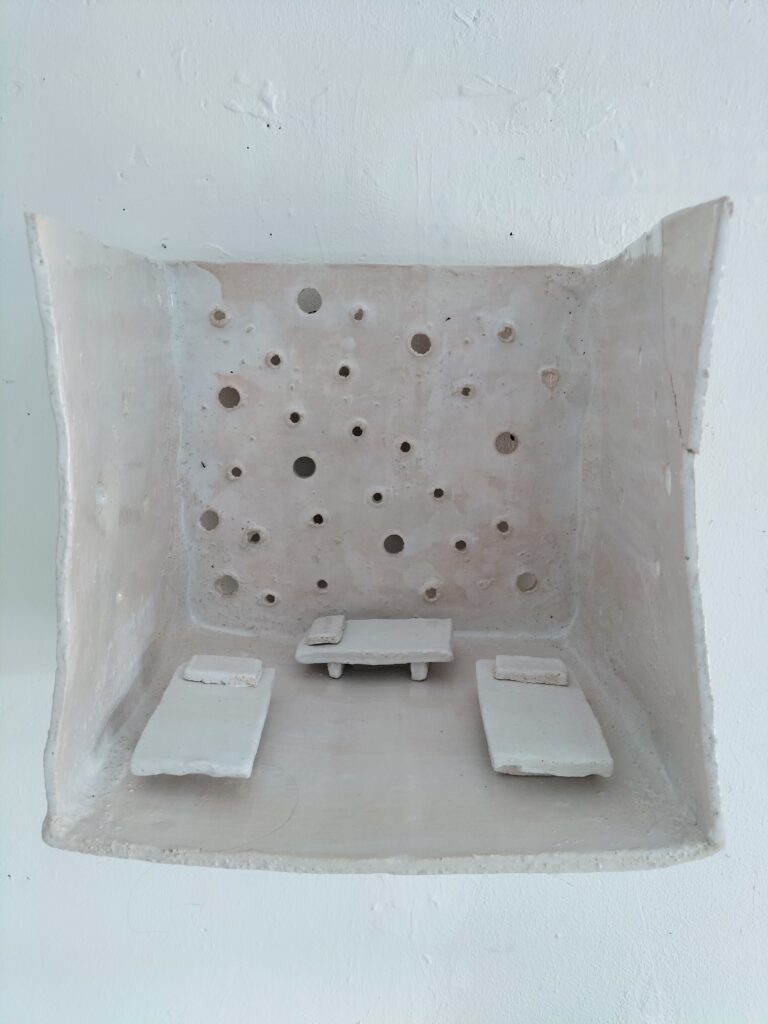
The space in which we live—and which we have consciously chosen—is a fundamental necessity of life. It provides safety, security, and a protective environment in which we can develop our identity. This personal space is something we have carefully constructed to ensure our own sense of security. We are committed to defending this space against external threats at all times. We build walls and ensure a solid structure that shields us from intruders and dangers. Above all, our living space must be practical and robust, not a fragile construction that leaves us vulnerable.
When this carefully built space is taken from us, we lose more than just a physical structure—we lose a significant part of our identity. It strips us of our sense of self, leaving us feeling exposed and unprotected.
This theme serves as the foundation of my work ‘Bare Space’. My fascination with empty, unadorned spaces stems from my mother’s past during the Second World War. As a child, she was a victim and a prisoner of the Japanese regime in Indonesia during WO II. She and her mother were captured as prisoners in a so called Jappenkamp on Sumatra.Throughout the war, she lost her sense of safety countless times, forced to relocate repeatedly. This constant displacement left a profound mark on her life—the relentless necessity of abandoning a safe place due to external threats.
War and violence repeatedly stripped my mother of the spaces where she sought refuge. Each time she believed she had found shelter, she was uprooted once more, forced to leave and deported to yet another place. The spaces assigned to her and her mother during the war were nothing more than empty, tiny, barren rooms—just four walls and a roof. Time and time again, she had to inhabit and transform these bare spaces, attempting to create a place where she could feel safe.
But what if that sense of safety is nothing more than an illusion? When do we truly arrive at a place of security? We have an instinctive urge to transform empty, barren spaces into warm, comfortable, protective nests—places where we cannot fall, where we are embraced and firmly anchored. Ideally, within that space, we could create another, and within that, yet another. Layer upon layer, each one reinforcing the illusion of safety. A space within a space within a space—endlessly expanding in an attempt to guarantee security.

